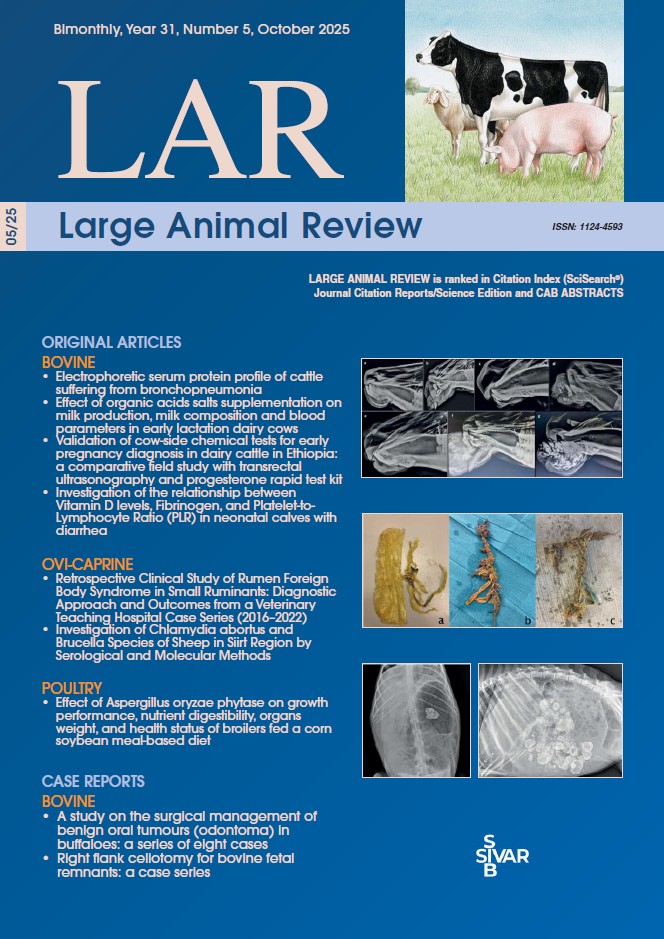Electrophoretic serum protein profile of cattle suffering from bronchopneumonia
Abstract
Bovine Respiratory Diseases (BRD) is a common devastating disease for cattle breeding, both calves, beef and dairy cows, but chiefly in calves. Our study, enrolling 200 cattle, aimed to determine the serum protein fractions and Albumin to Globulin ratio in two groups of cattle (157 healthy cattle and 43 with clinically diagnosed bronchopneumonia) from different age categories, beef and dairy cows, diverse physiological status, both male and female, and to evaluate the feasibility of using these biochemistry parameters as diagnostic biomarkers, in order to reduce a various para-clinical examinations. All the 200 obtained blood samples were analyzed through serum protein electrophoresis on buffered agarose gel at pH 9.1 using an automated electrophoresis system Hydrasys (Sebia Corporate, and we determined one of selected acute phase protein concentrations: haptoglobin. results were expressed as mean ± standard deviation (SD), The Shapiro–Wilk test was used to check normality before performing parametric tests such as Student test and Analysis of variance. One-way nonparametric analysis of variance was applied to compare groups (Kruskal–Wallis test), when the assumptions of one-way ANOVA were not met. Regardless to age, sex and physiological status, serum protein concentrations were found to be significantly higher (p<0.001) in cattle suffering from bronchopneumonia, as compared to healthy ones. the concentrations of γ-globulins differed significantly between the evaluated groups of bovines with higher values in animals with bronchopneumonia (p<0.01), also for β globulins. Haptoglobin concentrations greater than 0.41g /l were observed in ten (10) cows from the same breeding (5%) diagnosed with bronchopneumonia. In unhealthy cattle a marked shift in the concentrations of most protein fractions was observed, with significantly higher mean values of α1-globulins (p<0.001). Given that the α-globulin fraction includes many of the acute phase proteins such as haptoglobin. Also, serum proteins electrophoresis measurements in the monitoring of animals with respiratory diseases. Therefore, we could evaluate EPS instead of acute phase protein to determine the individual proteins responsible for changes in the electrophoretic pattern of serum proteins in cattle with bronchopneumonia.


